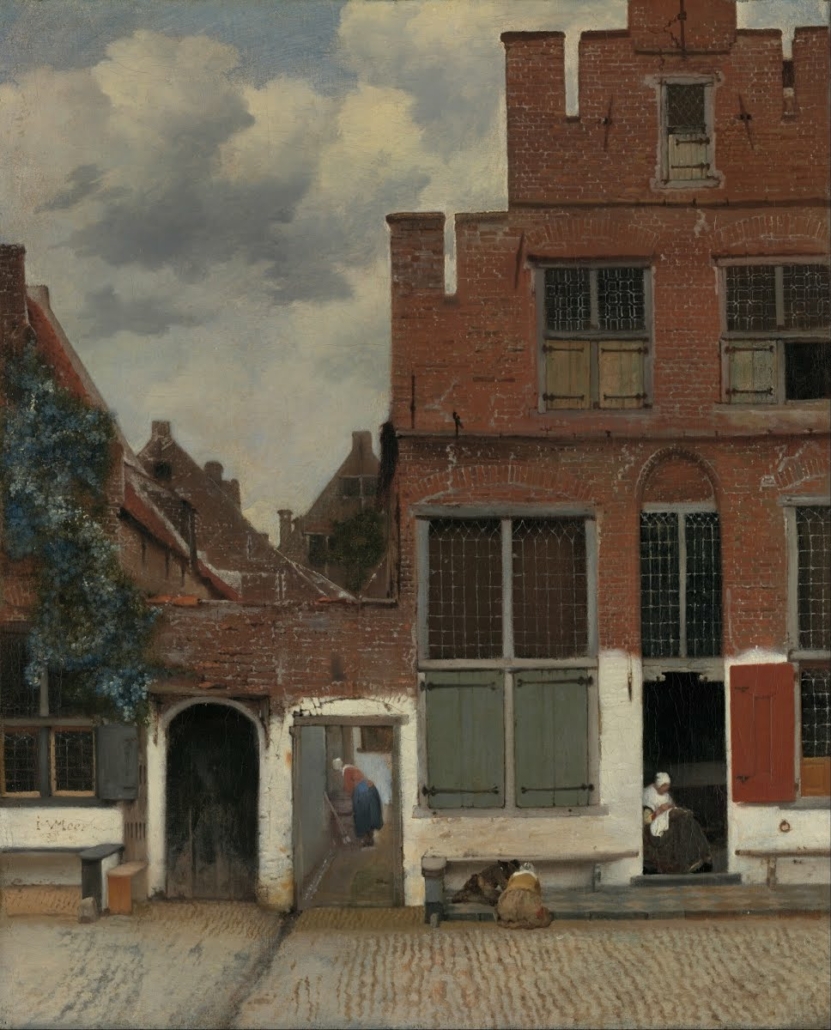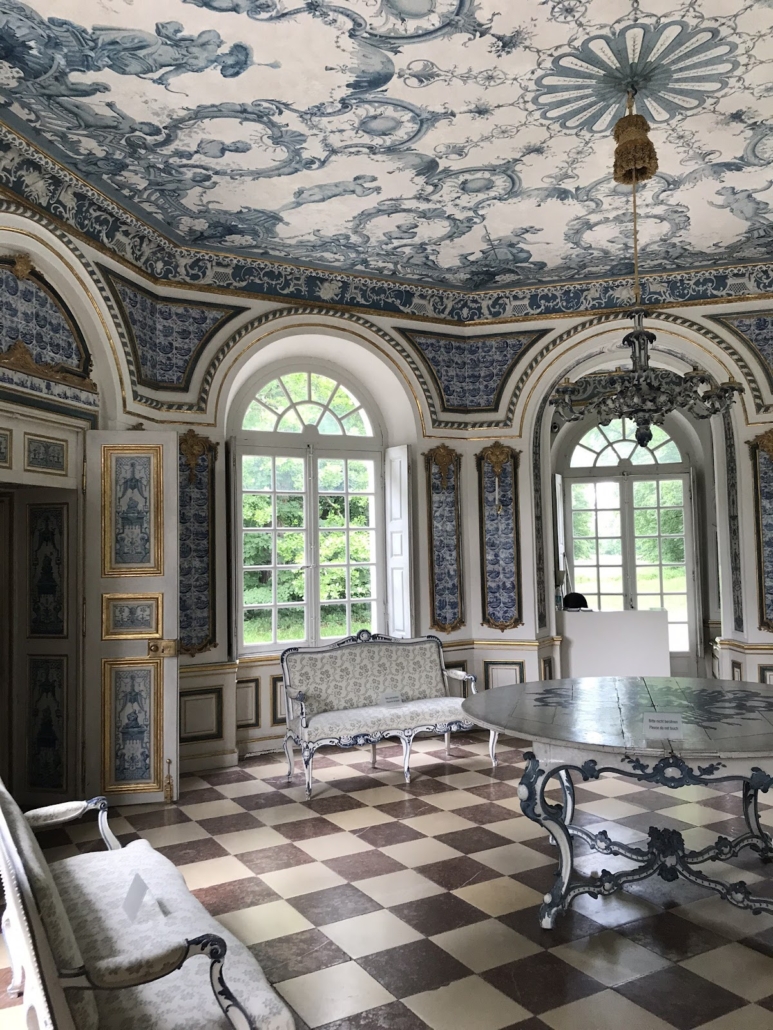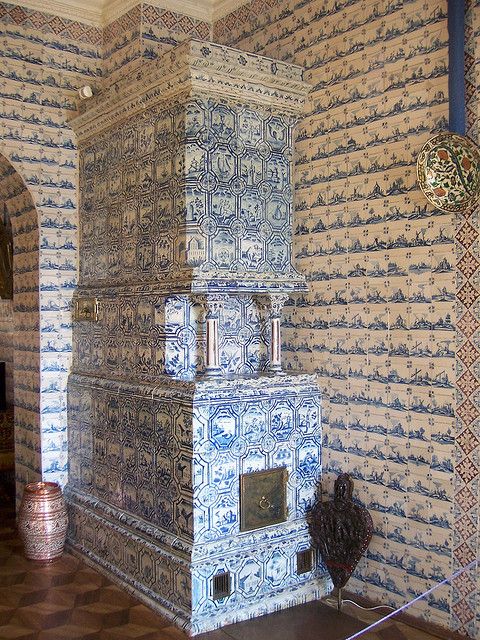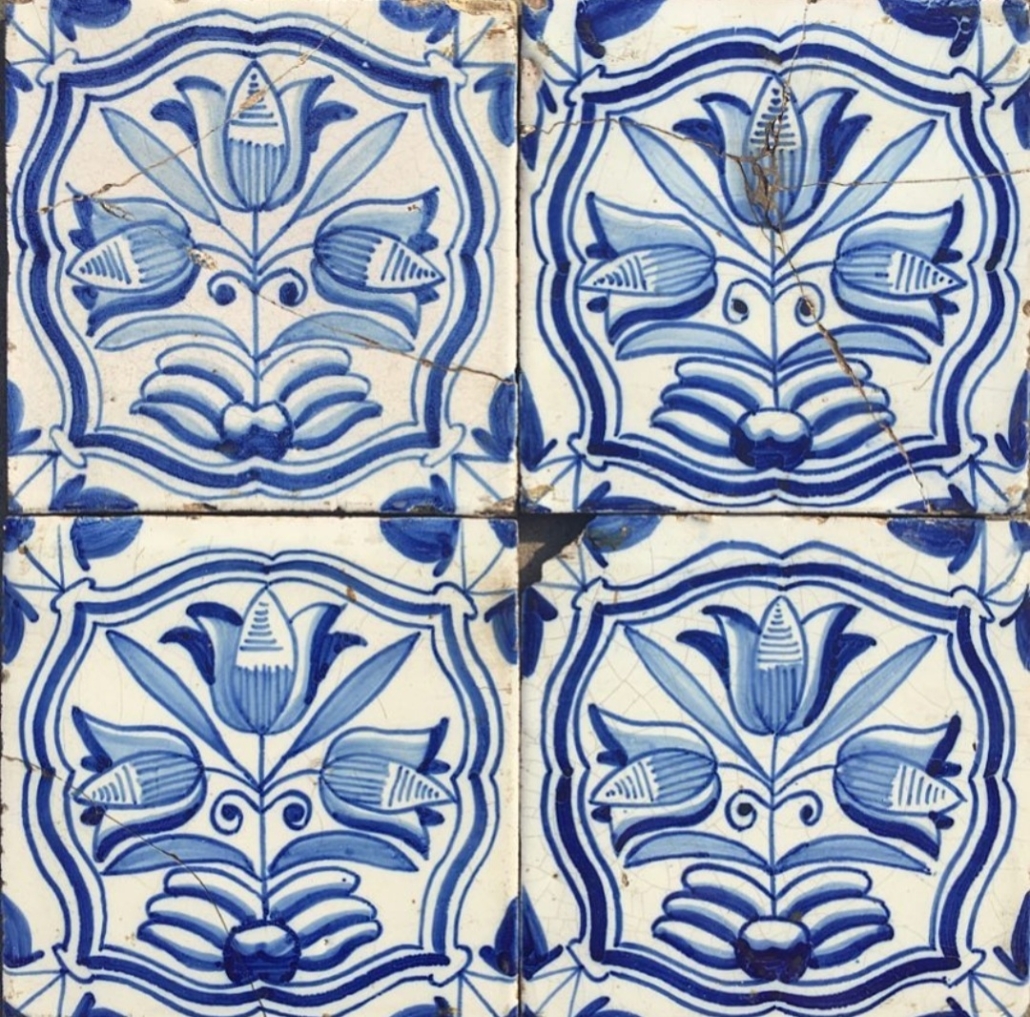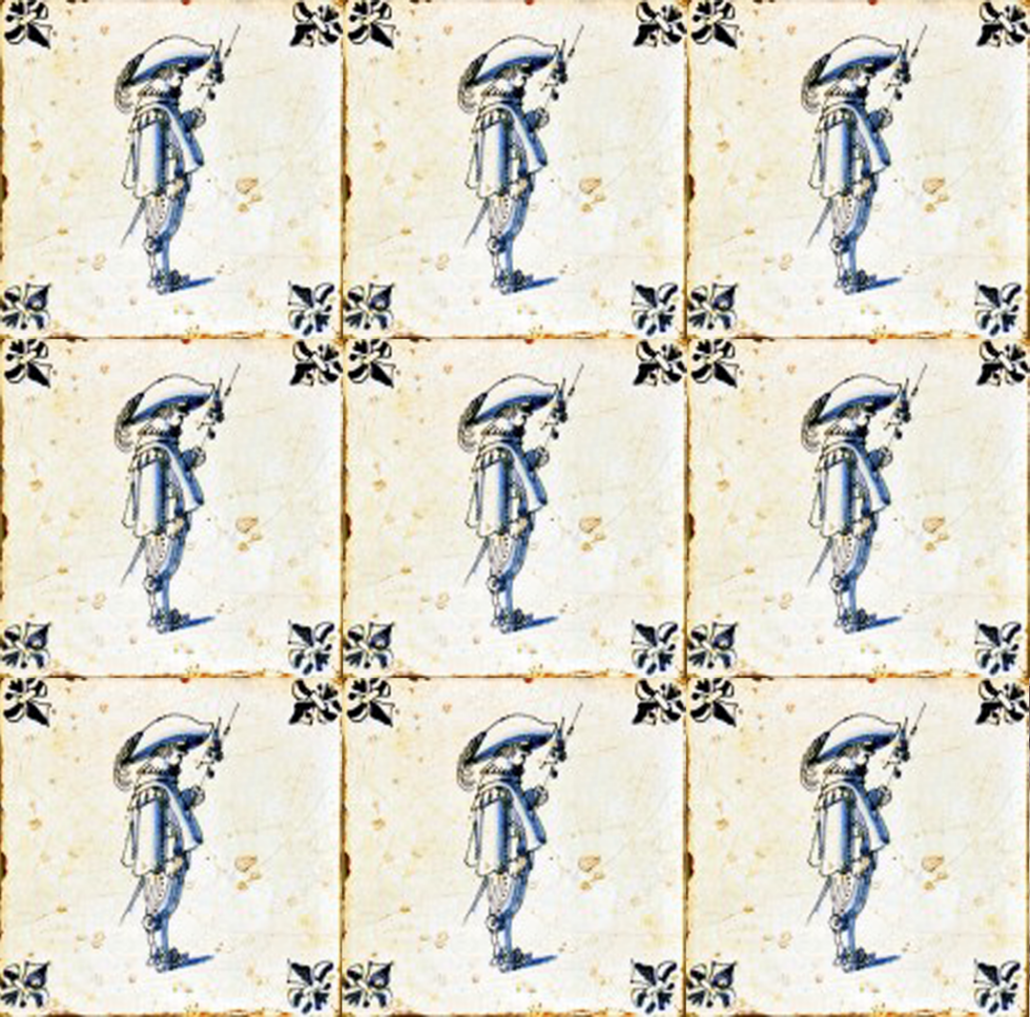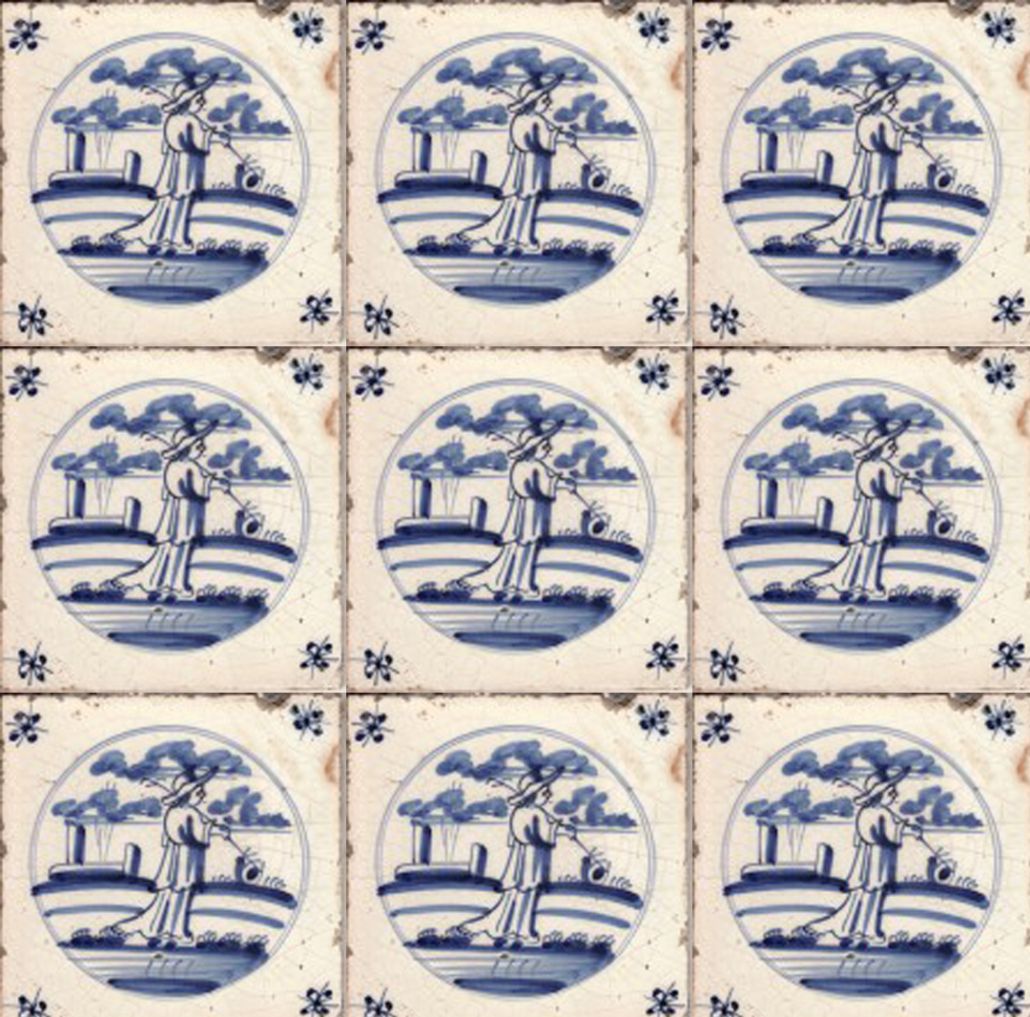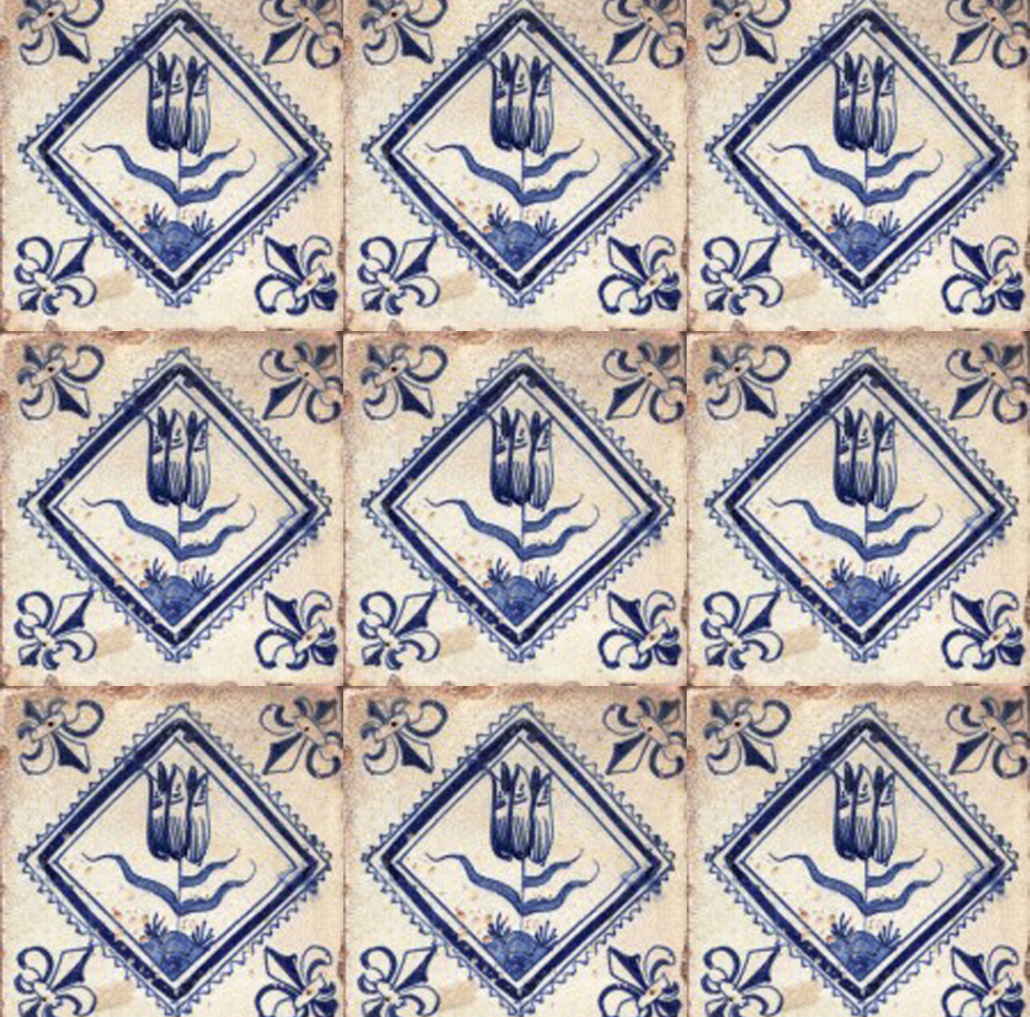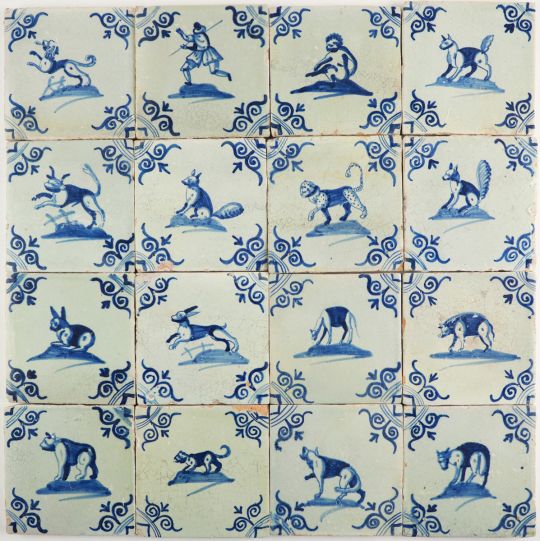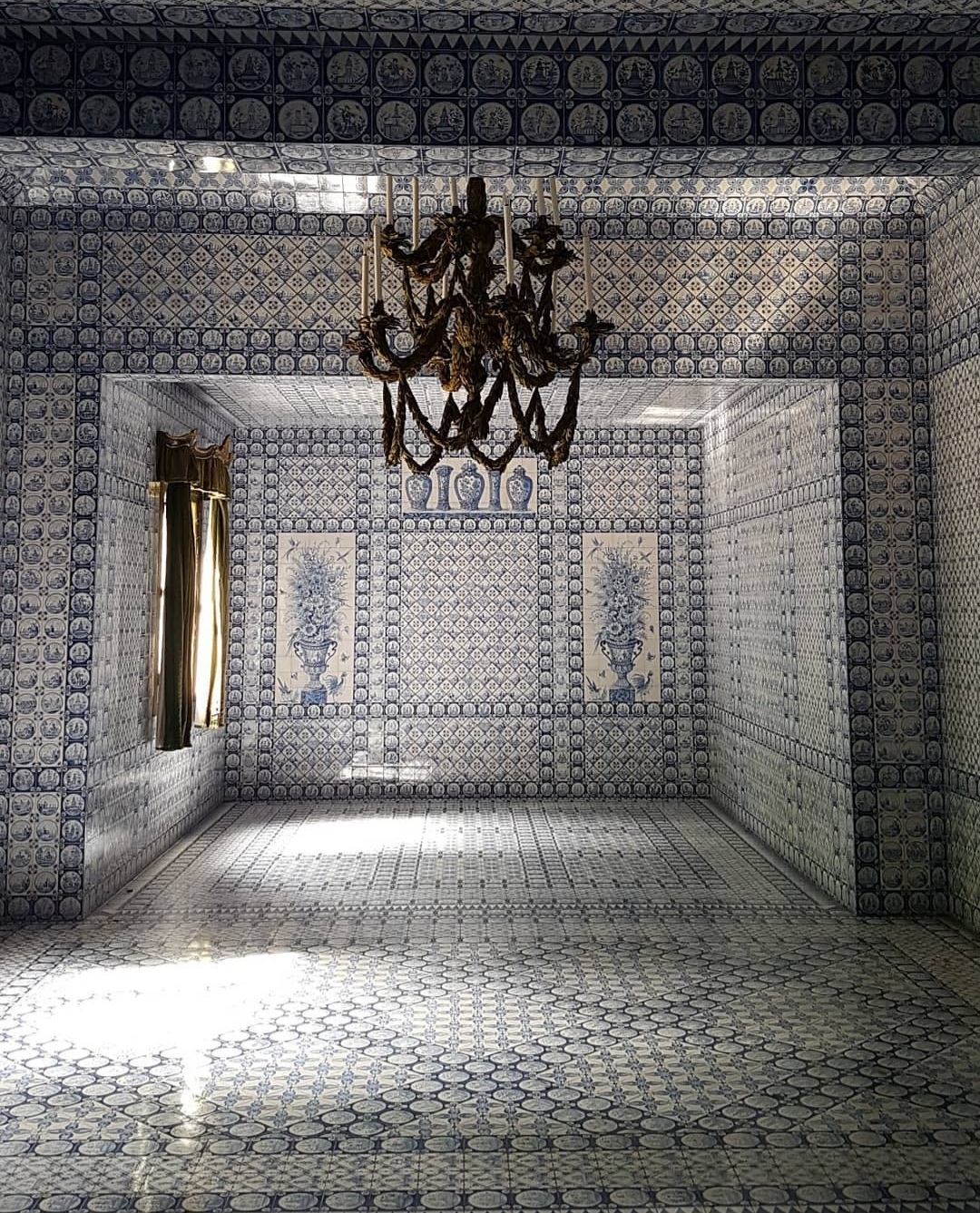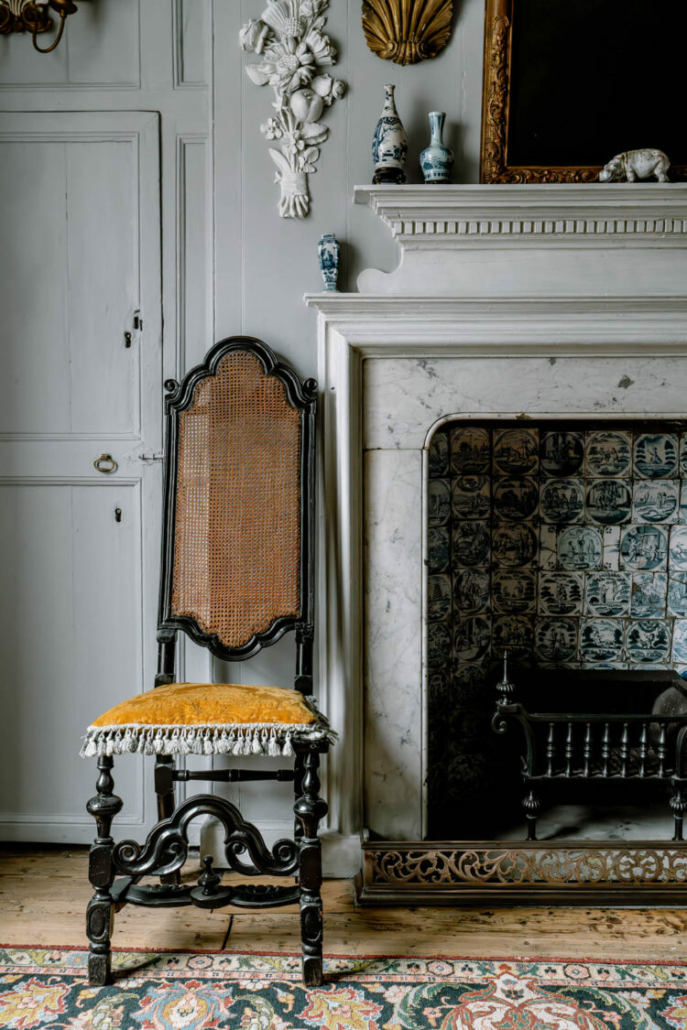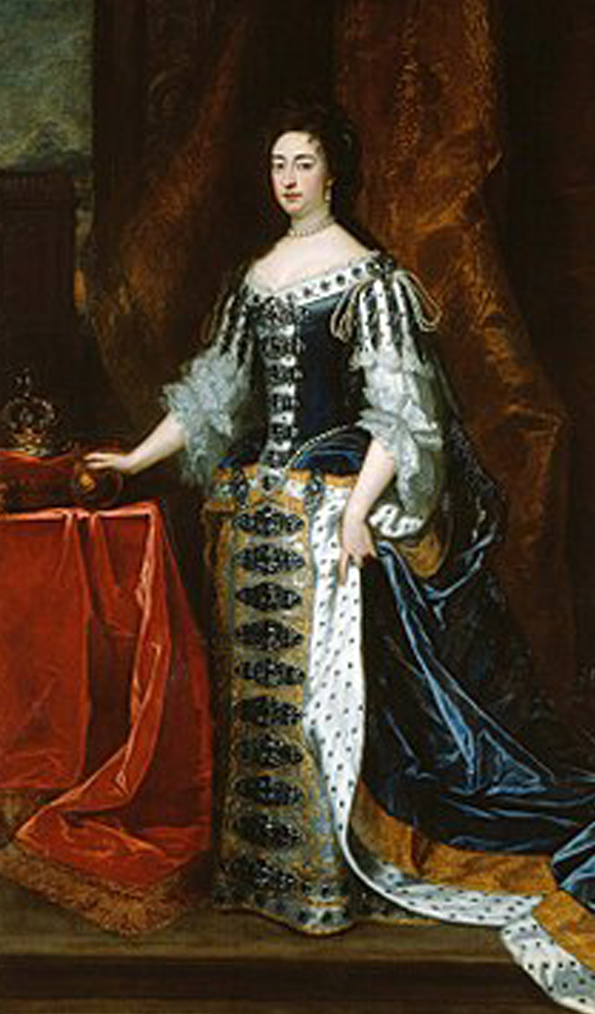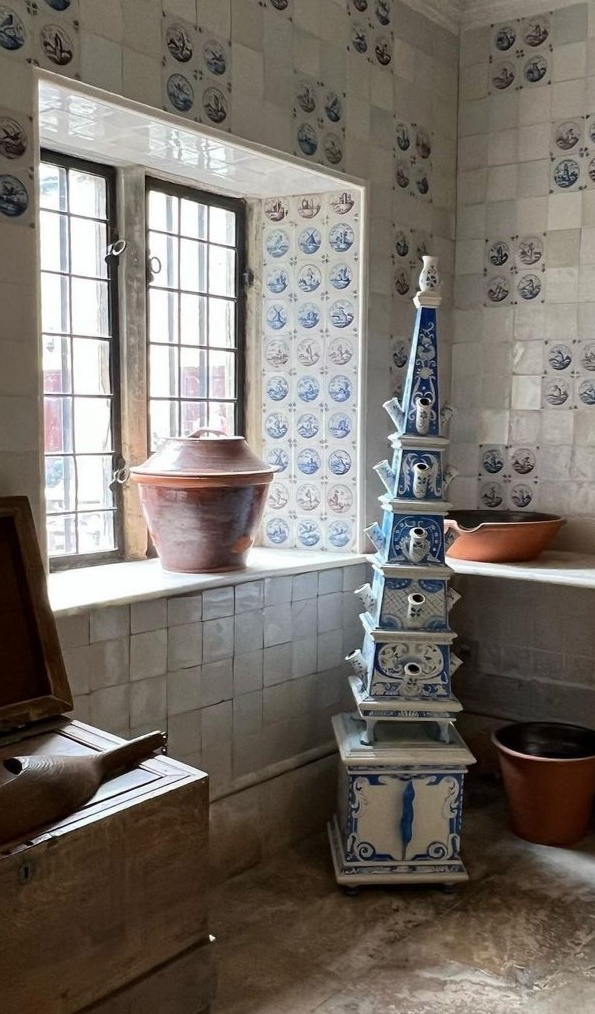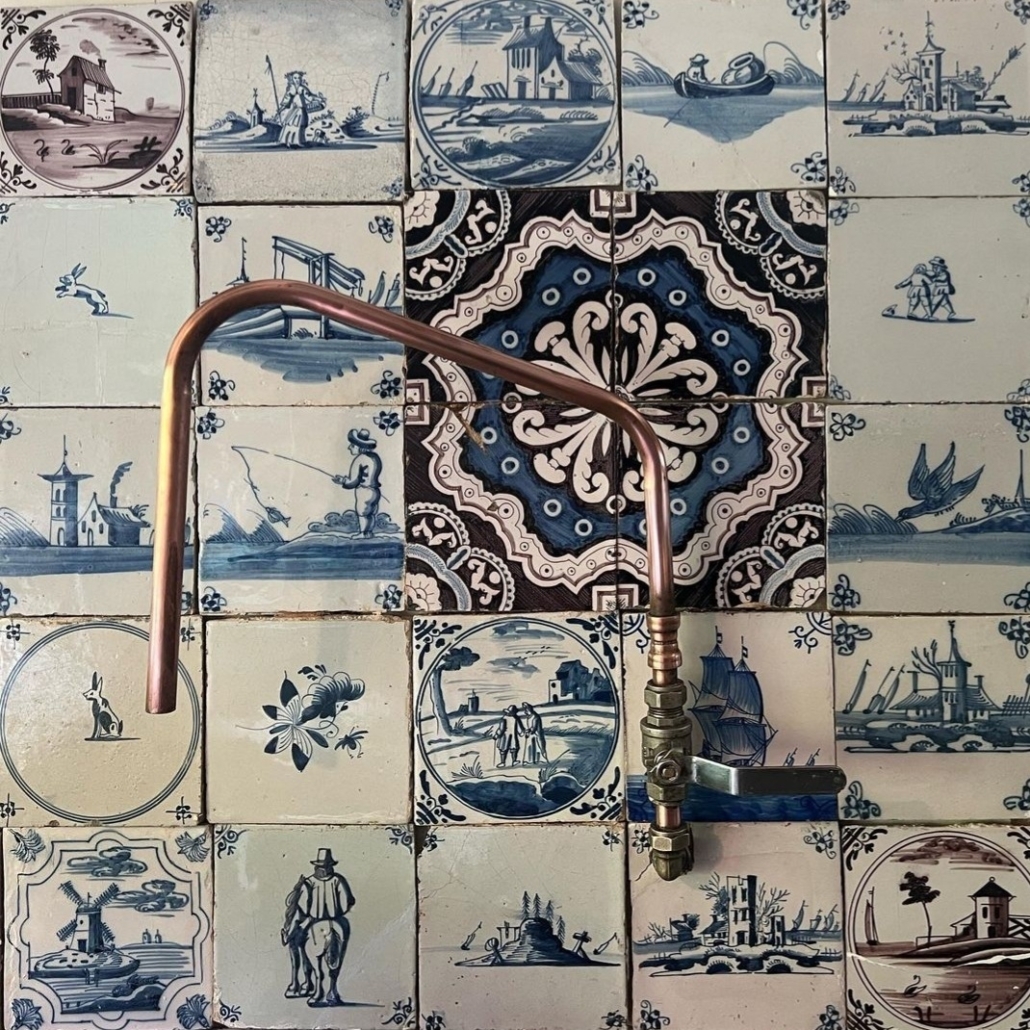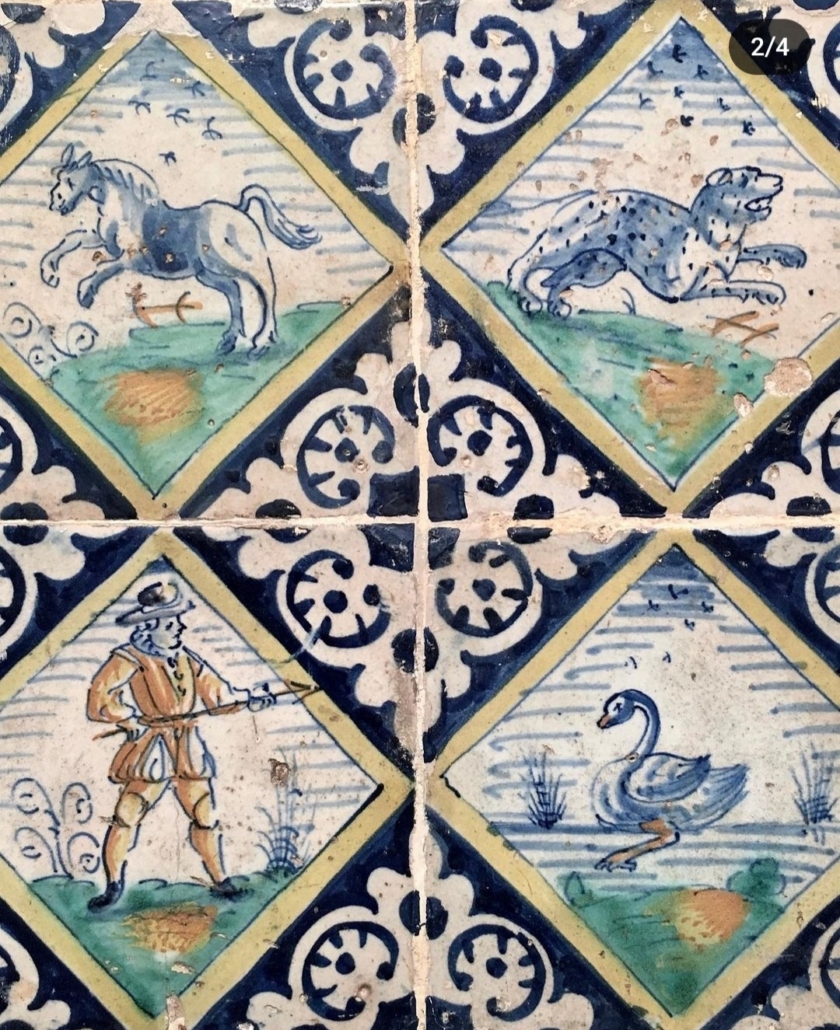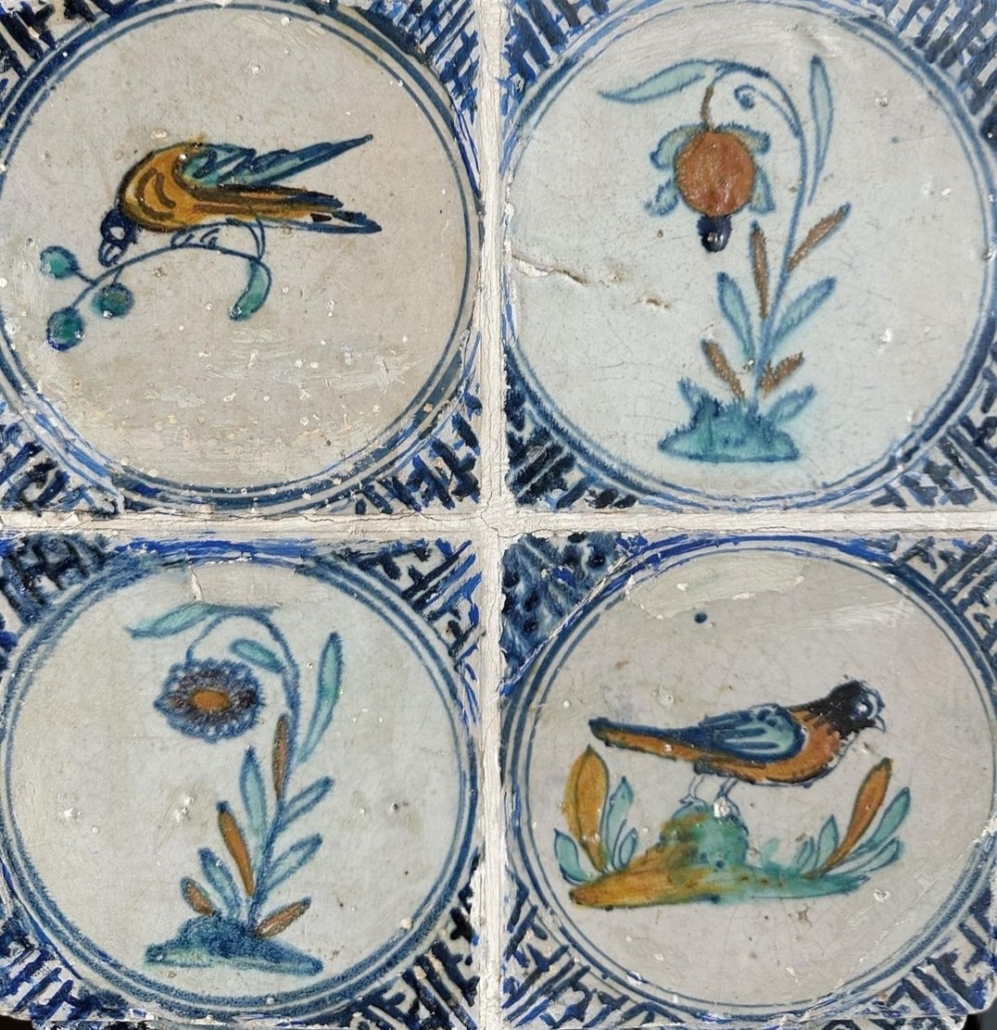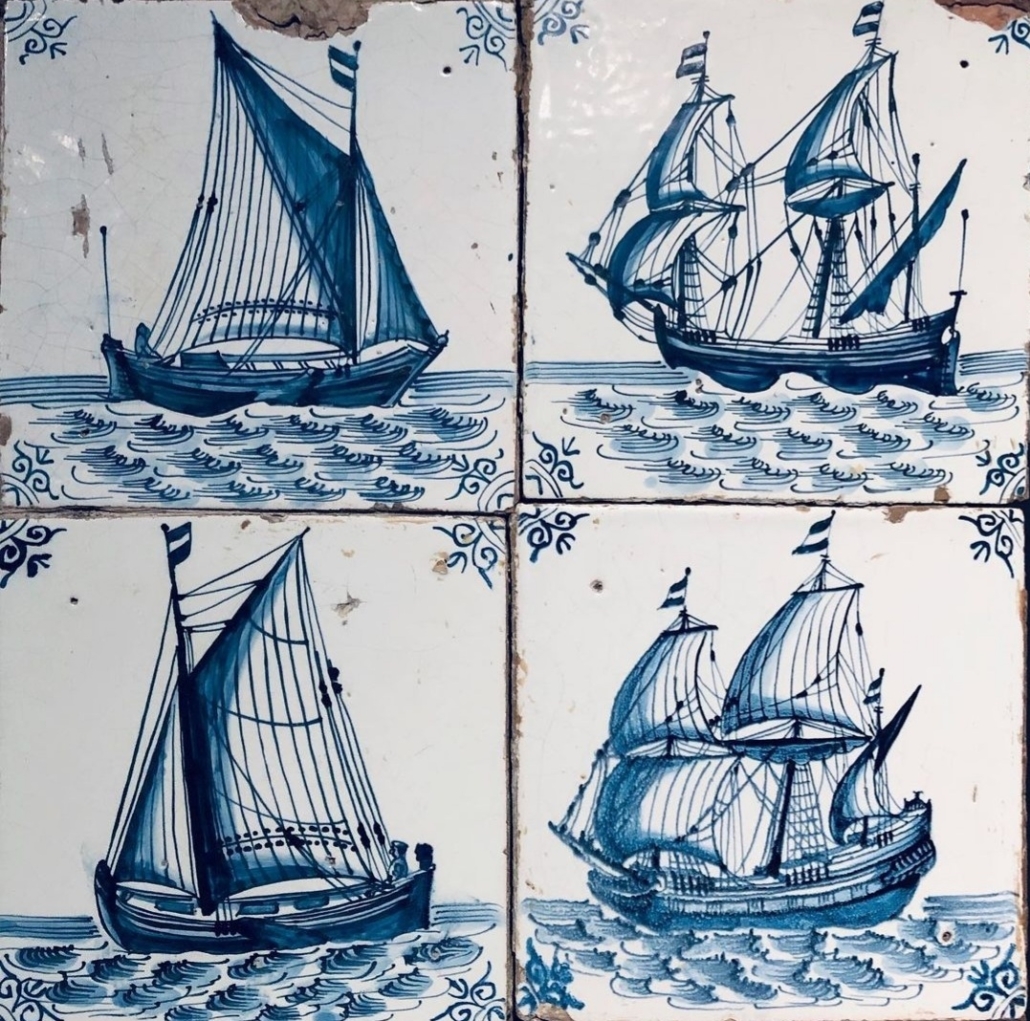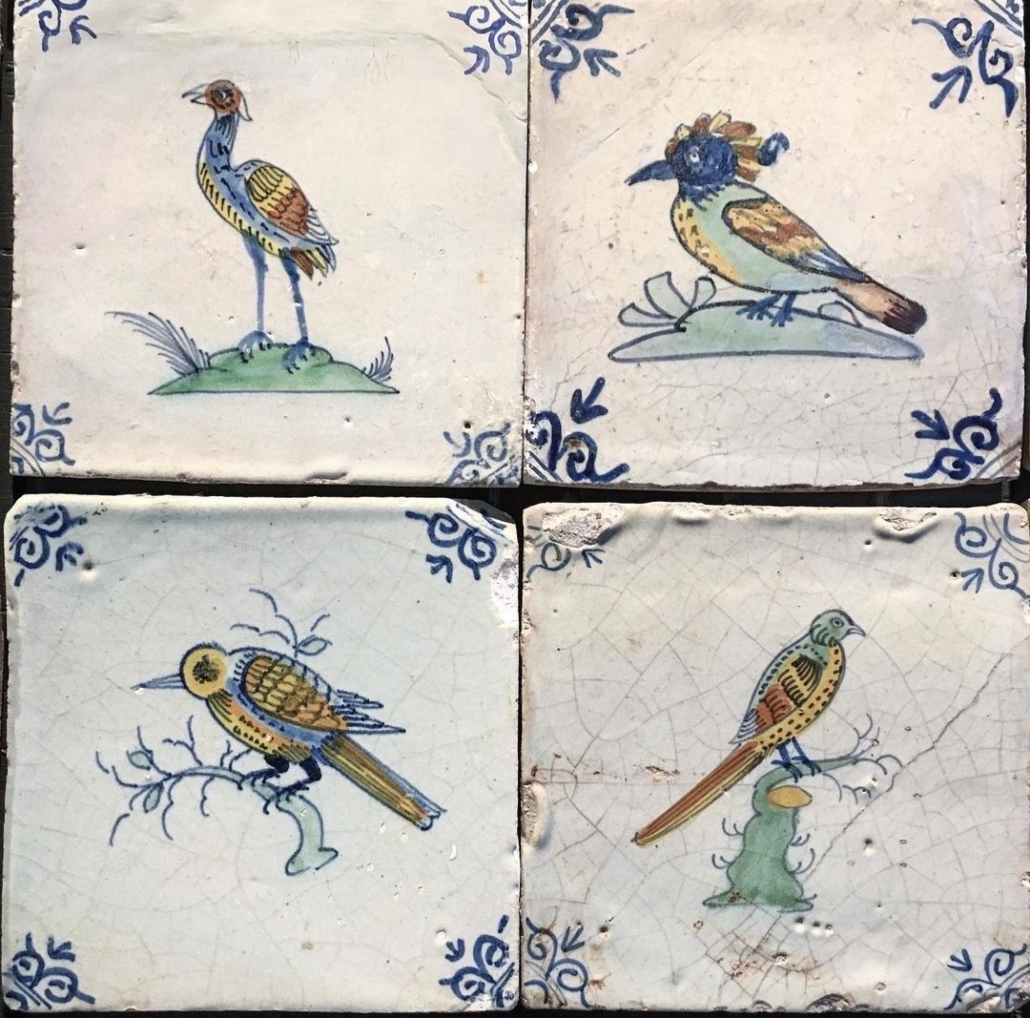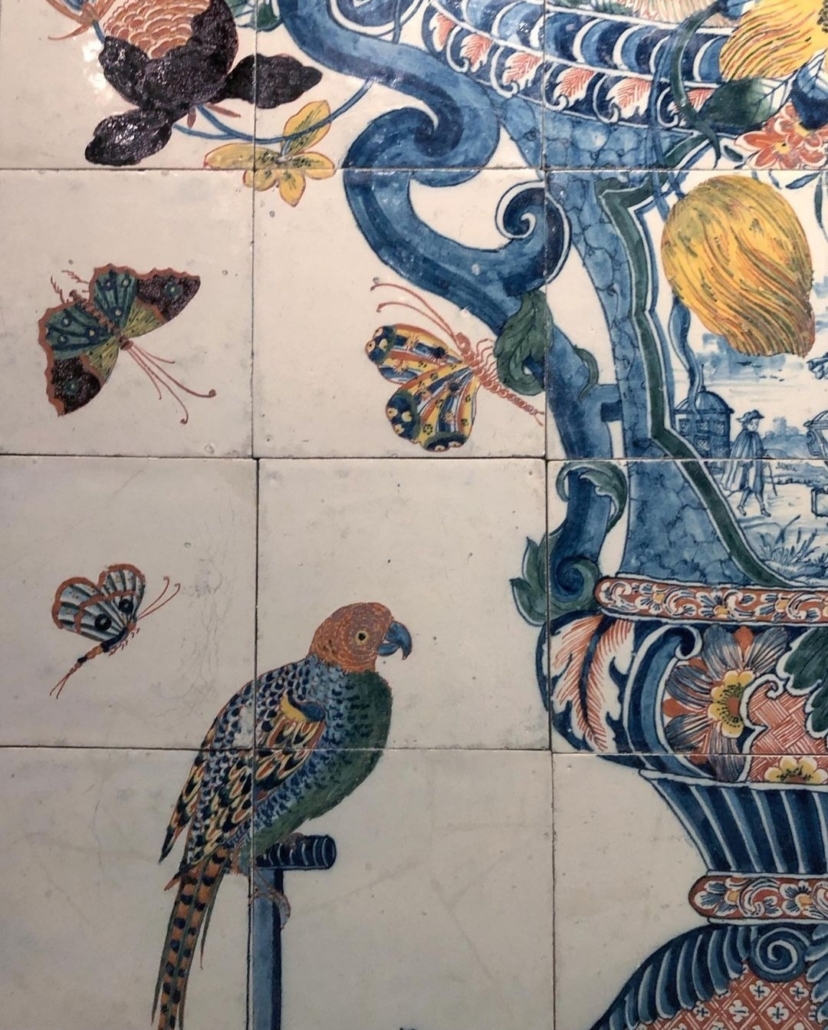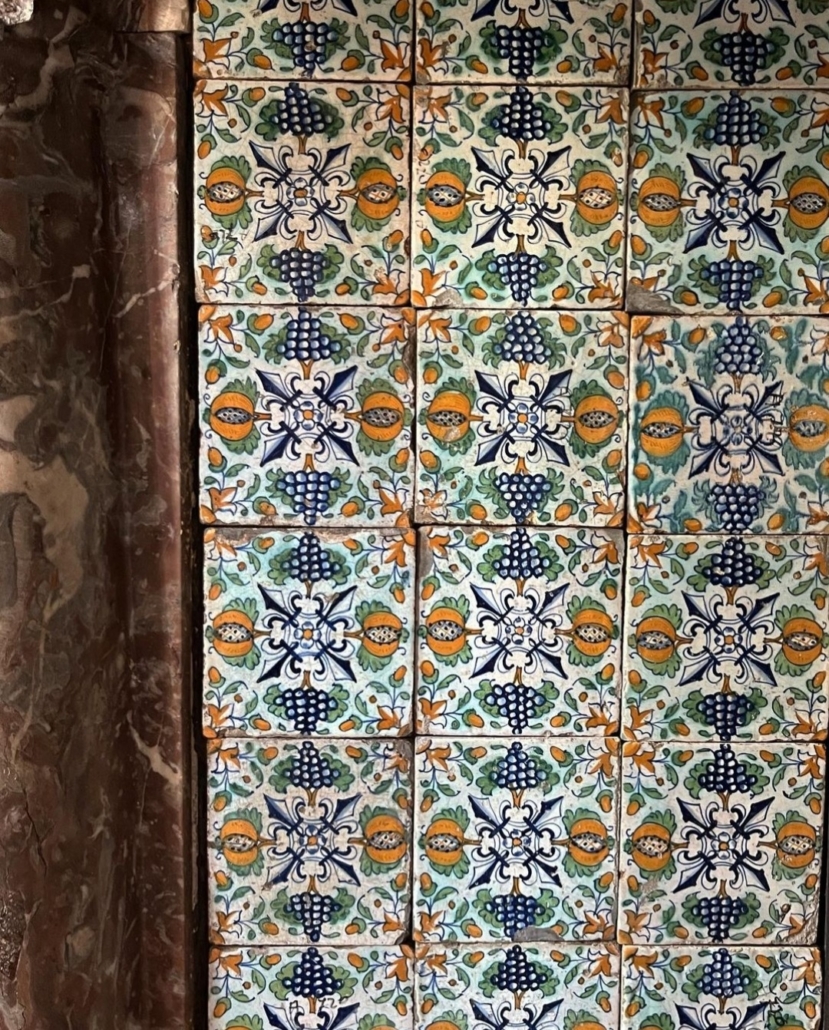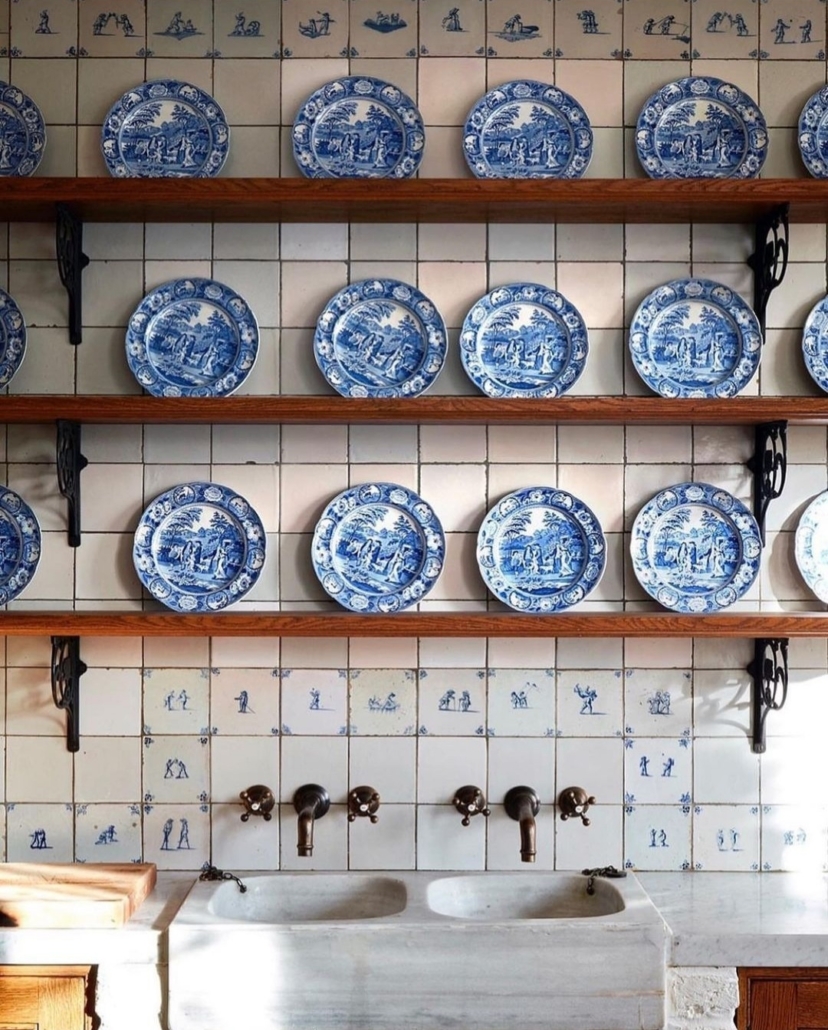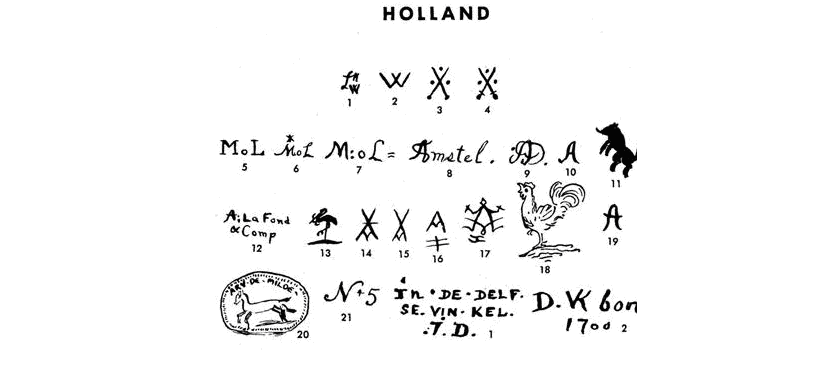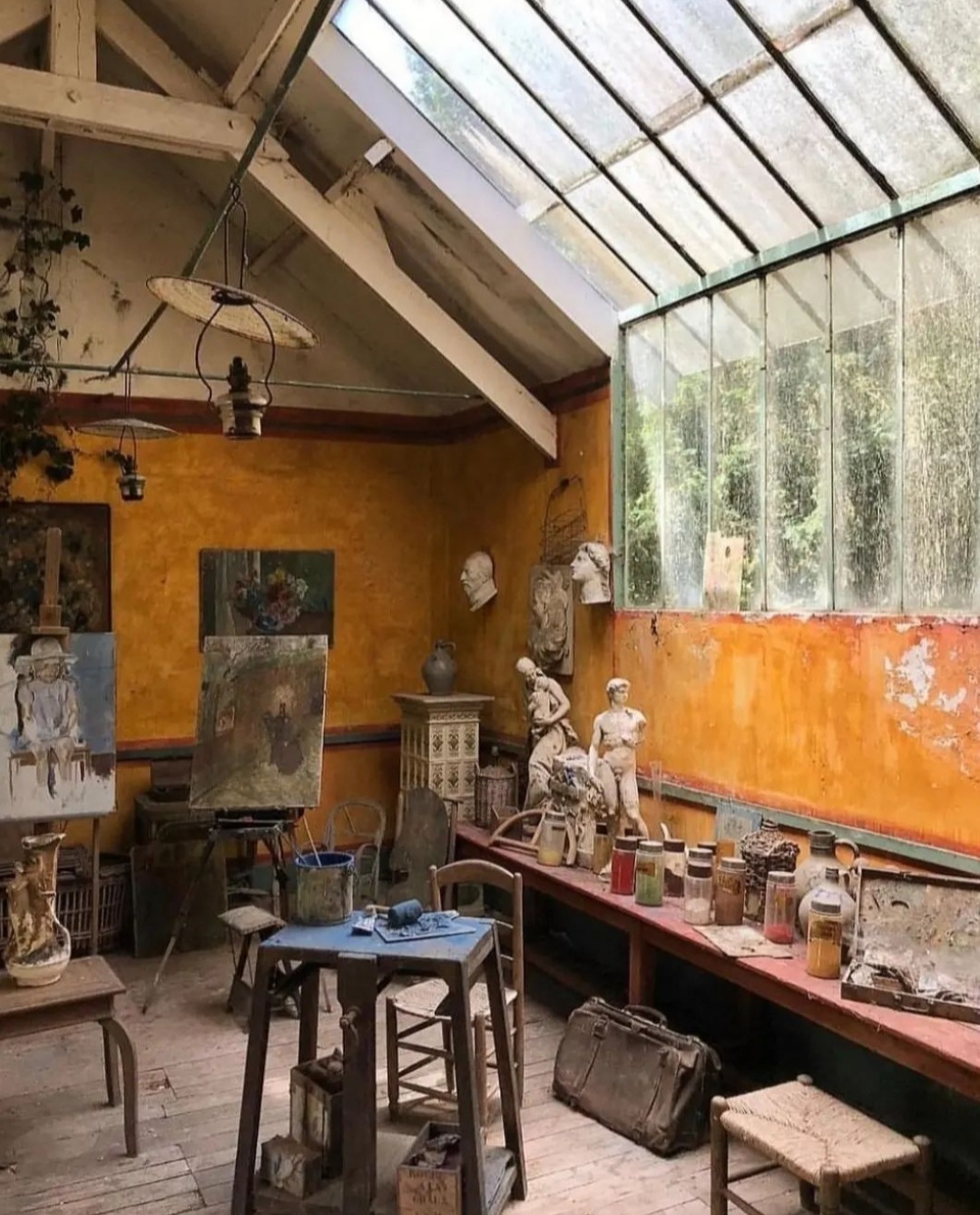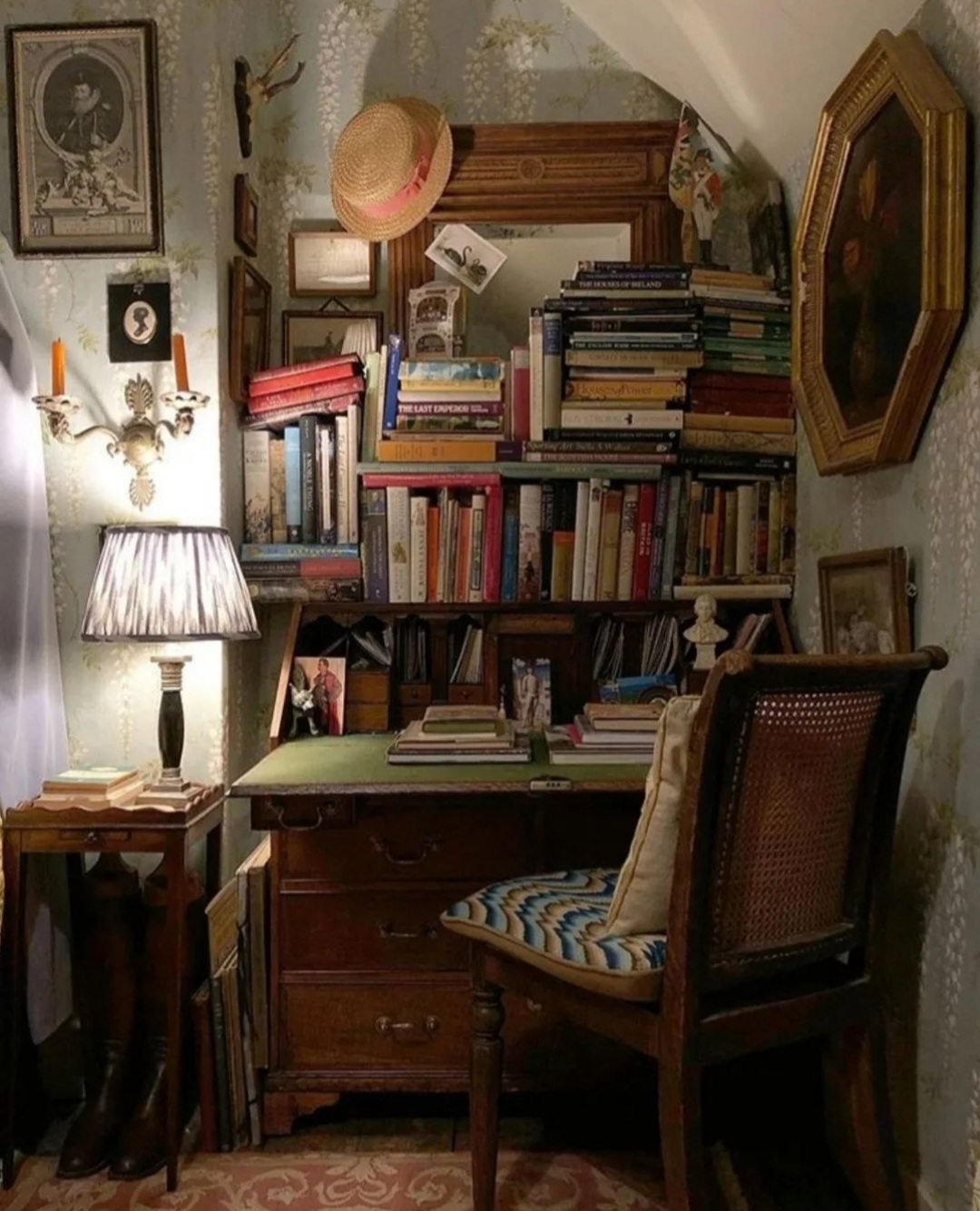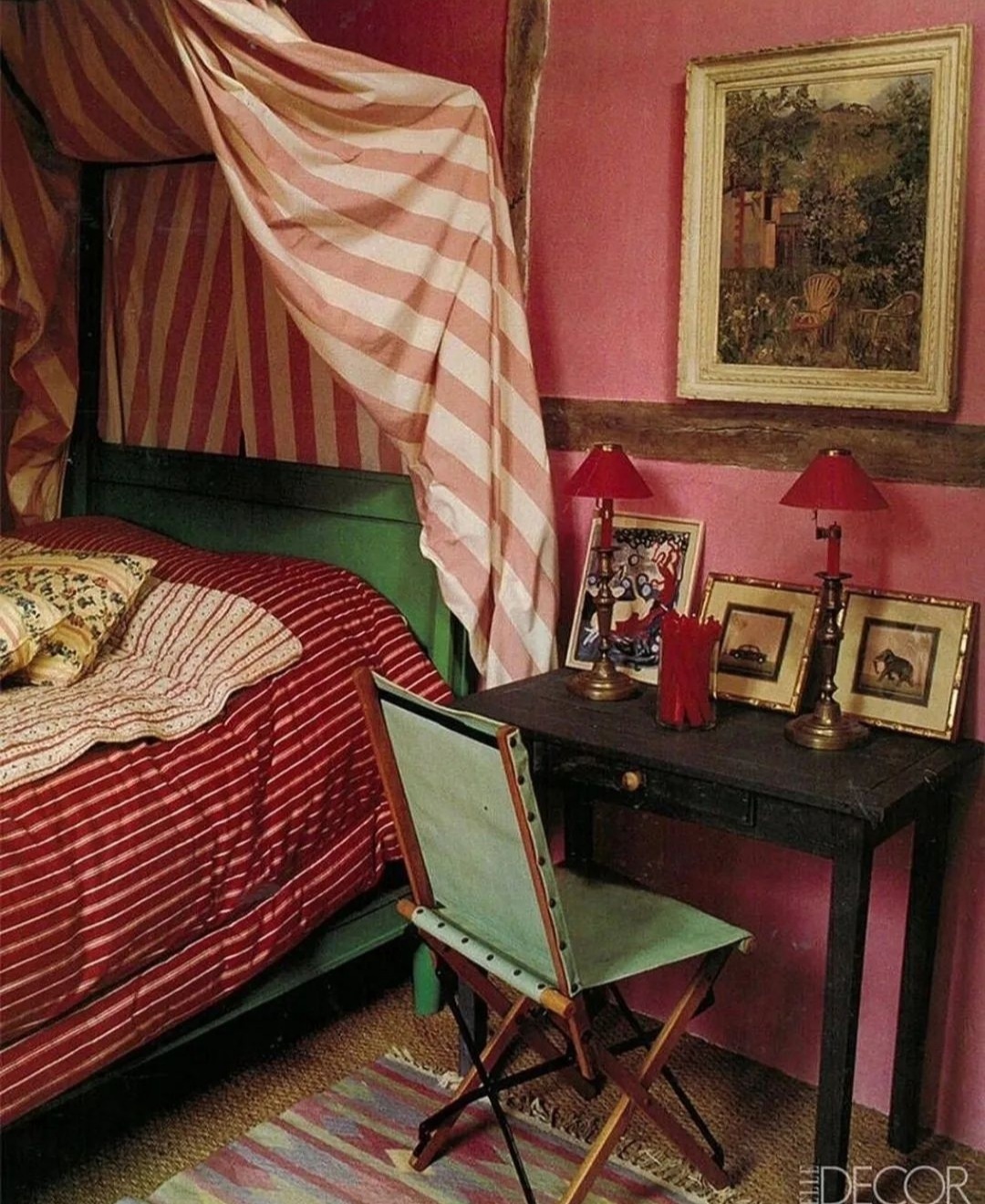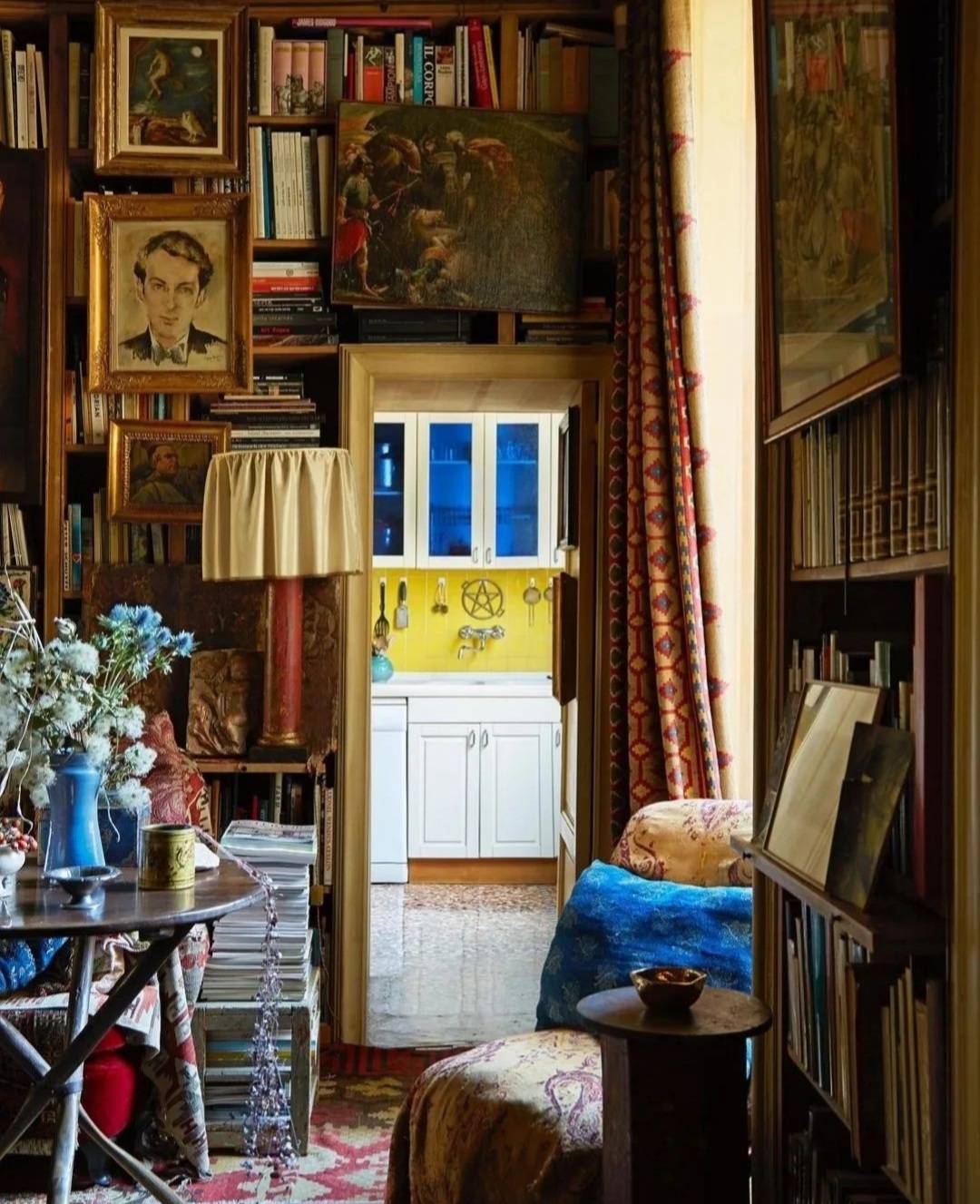THE FASCINATING HISTORY OF DELFTWARE & ITS OVER 400 YEARS OF ANTIQUITY
The ancient Delftware, which fascinates collectors worldwide and is sold at the finest auction houses, still graces numerous European palaces and mansions. The cherished pottery that coexisted with the painter Rembrandt (1606-1669) and Delft’s favorite son, the painter Johannes Vermeer (1632-1675), holds nearly half a century of Dutch history.
But where to begin…
The year is 1500, and we transport ourselves to a small village in central Italy.
As Europe emerged from the medieval darkness, it discovered the Renaissance, which originated in Italy in the 15th century and then spread to other parts of Europe, using Italian art as a reference point.
While Michelangelo sculpted “David” for the Cathedral of Santa Maria del Fiore in Florence, three Italian potters skilled in maiolica* from a small village called “Castel Durante” embarked on a long journey to the city of Antwerp.
Guido di Savino and his two compatriots not only practiced their craft in their adopted city but also taught the technique of Italian maiolica to their descendants and local potters to meet the high demand for their intricate creations.
The ‘Little Street’, Johannes Vermeer, Delft, 1658.
Nymphenburg palace Munich
76 years later in Antwerp, Belgium
The County of Flanders was part of the “Seventeen Provinces” governed under the Spanish crown of King Philip II, who was facing financial difficulties and ceased payments to his troops stationed there. In contrast, Antwerp enjoyed its status as one of the most important and cosmopolitan cities in Europe. These events led to a revolt by the soldiers of the Spanish military unit in the Army of Flanders. The revellion culminated in the bloody “Sack of Antwerp,” also known as the “Spanish Fury,” which took place between November 4th and 7th, 1576, resulting in the deaths of ten thousand citizens.
In 1584, the Spanish army captured Antwerp. This prolonged siege, lasting over a year, prompted these potters to flee northward, seeking refuge in the United Provinces (The Netherlands), specifically in Delft, taking their technique and expertise with them.
Menshikov Palace St. Petersburg
Almasy antiques
17th century Dutch Tile
17th century Dutch Tile
17th century Dutch Tile
Delft tiles 17th_century
La Tente tartare, Château de Groussay
Delft, The Netherlands 1585 – Present The Birth of Delftware and Its Spread Across Europe
Many disciples of Guido di Savino opened pottery workshops in the city of Delft, which would give its name to the famous pottery. Following the Netherlands’s independence from the Spanish crown in 1648, there was an economic boom in the country that fueled industrial growth. The Dutch East India Company dominated trade between Asia and the Netherlands; spices, textiles, and Chinese porcelain were just some of the exotic and coveted products that arrived in the country’s ports.
Meanwhile, in the workshops of Delft, the birth of one of our history’s most popular ceramics was taking shape, synonymous with the cultural heritage of the Netherlands; Delftware. In pursuit of a more affordable product, ceramists crafted pieces of fine earthenware capable of competing with the valuable Chinese porcelain, which was only accessible to the wealthiest classes.
Iñigo House
Ming Dynasty porcelain (1368-1644) was characterized by its white tones and, above all, its intense blues. Potters began to mimic these colors in their creations, and the demand was so high that during the 17th and 18th centuries, the Netherlands became the primary producer and exporter of tiles. The end of the Ming Dynasty in China in 1644 led to a drastic reduction in the amount of Chinese porcelain reaching Europe, further driving the expansion of Delftware.
During those times, it is estimated that Delft was home to more than 33 ceramic factories. Over the course of the 16th to 18th centuries, the city’s potters produced an astonishing quantity of over 800 million tiles, with the 17th century being known as the “Golden Century” of Delftware. This is why, even today, you can still find these tiles in numerous Dutch households, adorning the spaces of the most traditional homes.
Although other colors were used in different periods, Delft pottery remains associated with the intense blue that imitated Ming porcelain.
Mary II of England 1690
Dyrham Park National Trust
When Queen Mary II of England arrived in The Hague in 1677 after marrying William III, also widely known as William of Orange, she fell in love with Delftware and commissioned numerous vases and flower pots for her Dutch palaces, as well as for her English residence at Hampton Court. The most famous pieces in her collection were the “`Flower pyramids” (also known as ‘tulipiere’) that were stacked to form tall and impressive towers. Queen Mary had a deep affection for flowers and did much to popularize these types of vases among Dutch and English nobility.
Throughout these centuries, kings and aristocrats from across Europe ordered Delft tiles to decorate their palaces. These magnificent tiles still endure today, adorning numerous mansions, such as Nymphenburg Palace in Munich, the Porcelain Trianon at Versailles (although it was demolished in 1687 and replaced by the Grand Trianon), Château de Beauregard in France, Menshikov Palace in St. Petersburg, and the Bardo Palace in Tunisia, to name just a few examples.
Via Crucis by Jan Aalmis found in Ayamonte (Spain) 18th century.
Even Portugal, one of the countries with the richest traditions in ceramics and tiles worldwide, was captivated by the beauty of Delftware. During the 17th century, numerous Portuguese aristocrats commissioned tile panels from Dutch workshops. A century later, Portuguese ceramists, inspired by the colors and designs of Delft Blue, began painting their tiles in blue and white.
Dutch tiles are characterized by their ornamental compositions. The simplest ones feature a central motif, framed by decorative elements in the four corners. The main themes include landscapes, ships, biblical scenes, gallant characters, children’s games, flowers, and animals.
One of Delft’s most famous painters is Frederik van Frytom (1632-1702), who masterfully decorated wall plaques with finely drawn blue-toned landscapes.
The Rotterdam workshops of Jan Aalmis (1674-1755) and Cornelis Boumeester (1652-1733) also produced ceramic panels on a larger scale. Recently, an unprecedented set of tiles by Jan Aalmis of Rotterdam was discovered on a farm in the village of Ayamonte, Spain.
The Decline of Delftware and Royal Delft
As Delft pottery expanded throughout Europe and gained immense popularity, imitations began to be produced in various European countries. The term “Delft” was also used, making it a generic name referring more to a style than an origin, and causing the closure of the vast majority of ceramic factories in Delft due to lack of demand.
The only one to survive the closure was Royal Delft, founded in 1653, becoming the sole company dedicated to the artisanal production of Delftware that is still in operation today. This extraordinary persistence was thanks to the impeccable management of a man named Joost Thooft, whose name is still represented in the mark carried by all Royal Delft pieces.
Buy Curios
Where to Buy Antique Delftware
Regts Delft Tiles, located in the Netherlands, has specialized in antique tiles for 50 years and boasts an extensive stock of tiles. The company is currently the world’s largest distributor of antique Delft tiles.
Christie’s and Sotheby’s auction houses regularly auction significant ceramic pieces as well as lots of antique Delft tiles.
They can also be found on eBay and of course in some antique markets or shops, such as Deco for Curious.
If you’re visiting the city of Delft and are interested in acquiring contemporary Delft pottery, I recommend exploring the Heinen Delfts Blauw store (also available in Amsterdam) or visiting the Royal Delft Factory Museum store. The latter option is particularly interesting as it allows you to enjoy a unique combination: observing the ceramic production process and purchasing a piece as a souvenir.
Reproductions of Antique Delft Tiles
Located in Paris, the Almaviva workshop faithfully reproduces antique Delft tiles and panels using traditional techniques, often employed in restoration projects.
The Douglas Watson Studio in the United Kingdom specializes in the artisanal production of contemporary and traditional ceramic tiles, as well as recreations of original Dutch hand-painted panels.
It is worth highlighting the legacy left by the English ceramist Simon Pettet (1965-1993) despite his short but impactful career. Pettet reinvented 18th-century Delftware by using traditional techniques and historical references to create something genuinely innovative. His work was recently exhibited in the “Making History: The Ceramic Work of Simon Pettet” exhibition last May at the Dennis Severs‘ House, where he lived and worked. This exhibition was curated by Rupert Thomas, former editor of The World of Interiors.
Eelke Jan Bles
Eelke Jan Bles
Eelke Jan Bles
Eelke Jan Bles
Eelke Jan Bles
Delftware Exhibitions
The Royal Delft Factory Museum in Delft, completely restored in 2022, has become a unique combination of a museum and factory. Part of the visit takes place in the factory, where Delft blue ceramics are handcrafted.
The Kunstmuseum in The Hague houses one of the largest and most beautiful collections of Delft pottery in the world. The exhibition is called “Delftware Wonderware.”
The Rijksmuseum in Amsterdam houses an impressive collection of antique Delftware with over 1,600 pieces.
Authenticity and Antique Delftware Signatures
Most marks on Delft pottery consist of potter’s signatures or initials, although only about a third of them chose to use them. Additionally, there is the added challenge that external competitors to Delft often counterfeited these marks. For this reason, it is often advised to consult experts who examine other characteristics, such as materials and decoration, to determine the authenticity of a piece.
You can find factory marks and signatures on Dutchdelftware.com, a prominent website dedicated to Dutch ceramics, supported by experts and prominent museums as sponsors, providing a valuable source of information and expert commentary.
Rembrandt`s house
Susie Atkinson
Additionally, Quattrocchi Antiques, an antique dealer based in Uruguay, showcases some antique signatures of Delftware ceramists related to dates.
Review of Porcelain factories in this painting: Registered in Weesp in 1764, closed in 1771.
Transferred to Oude Loosdrecht in 1772. Out of Oude Amstel in 1784 and closed again near the end of the 18th century. George Dommer & Co. established a factory exists at this time, but ceased operations in 1810. A. La Fond & Co. started working in Amsterdam at that time. 1775 a porcelain factory was opened in The Hague and closed 10 years later. In Arnheim there was a Fayence factory from about 1780 to 1785.
1-4 -Weesp. 1764-1771. Porcelain. 1, 2-in blue and red. 3, 4-in blue
5-7- Oude Loosdrecht. 1772-1784. blue,
8-10- Oude Amstel. 1784-c. 1800.
11- Amsterdam. Blue colored markings.
12 – A. La Fond & Co. Amsterdam. 1st quarter of the 19th century.
13 – The Hague. do. 1775-1785. The stork’s mark in blue is found in various forms. Some of the Tournai porcelain was decorated here. The stork in underglaze blue appears on The Hague porcelain, and in underglaze blue decorated Tournai porcelain in The Hague.
14-16 – Weesp. 1764-1771.
17 -16 – 71-1708. In red earthenware.
18- 19- Arnheim. Fayence.About 1780. H. Van Laun. 19-Amstel
20- In late 17th century red earthenware
21- The Hague. 18th century mark in red
The interiors tell the story of the house and the people who lived in it.
Bibliography
https://delft.fr/
http://www.hansvanlemmen.co.uk/cv/
https://www.catawiki.com
https://www.almaviva.com/fr/carreaux-delft/
https://www.tegels-uit-rotterdam.com
https://es.wikipedia.org
This post is also available in: Spanish
